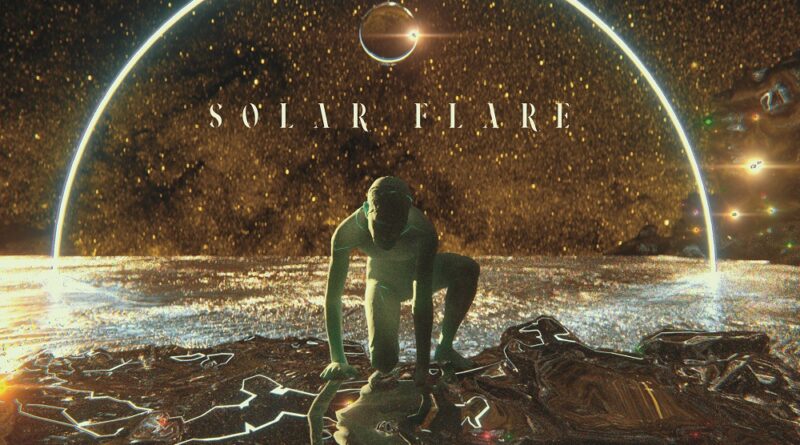Sonic Shores: An Auditory Adventure to the World's Most Unique Soundscape Beaches

In an increasingly noisy world, the search for tranquility and unique sensory experiences is leading travelers beyond visual landmarks and culinary delights. "Sonic tourism" is emerging as a captivating way to explore the world, focusing on the distinctive soundscapes that define a place. This focus aligns perfectly with the growing interest in ASMR (Autonomous Sensory Meridian Response) and the therapeutic benefits of nature sounds. Millions seek relaxation through recordings of ocean waves, gentle rain, and rustling leaves. At VistaLocation.com, we're curating an auditory journey to some of the planet's most sonically fascinating beaches. Prepare to close your eyes, open your ears, and discover a new dimension of travel.
Shell Beach, Shark Bay, Australia: A Symphony of Crunch
Imagine a vast, sun-drenched expanse stretching as far as the eye can see, not of sand, but of billions upon billions of tiny, pristine white shells. This is Shell Beach in Shark Bay, Western Australia. Here, the dominant sound isn't the roar of the ocean, but a constant, mesmerizing "crunching" and "crackling" underfoot. Each step creates a unique sonic signature, a delicate chorus of brittle fragments shifting and settling. The wind, sweeping across the open landscape, adds another layer to the soundscape, creating echoing whispers and swirling rustles.
Photography Instructions: To capture the essence of Shell Beach, use wide-angle shots during the golden hour (just after sunrise or before sunset). This will emphasize the vastness and unique texture of the shell landscape. The golden light will also enhance the warm, desaturated color palette. Experiment with long exposure to visualize the movement of the wind across the shell surface, blurring the individual shells into a flowing, ethereal texture.
The unique acoustic properties of Shell Beach are directly related to the composition and structure of the shells themselves. The shells, primarily composed of the bivalve Fragum erugatum, are relatively thin and brittle. This fragility contributes to the sharp, crackling sounds produced when they are compressed. The sheer quantity of shells creates a resonant surface, amplifying the sound and creating an immersive auditory experience.
Practical Details: Shell Beach is easily accessible by car. Visitors are advised to wear shoes or sandals due to the sharp edges of the shells. Note: The intense, repetitive sounds may be overwhelming for individuals with auditory sensitivities or misophonia.
Call to Action: Capture your own Shell Beach soundscape and share it with us using #VistaLocationSounds.
Glass Beach, Fort Bragg, California: A Tinkle of Time
From the vast expanse of shells to the jewel-toned fragments of history, we travel to Glass Beach in Fort Bragg, California. This beach, once a dumping ground for discarded glass, has been transformed by the relentless power of the ocean into a stunning mosaic of polished sea glass. Here, the primary auditory experience is the delicate "tinkling" and "chinking" of the glass as the waves gently wash over the shore. The sunlight glints off the smooth, colorful pieces as they tumble in the surf, creating a visual and auditory spectacle.

Photography Instructions: Focus on close-up shots of the sea glass, capturing the textures and colors. Use a shallow depth of field to isolate individual pieces and create a dreamy, ethereal effect. Shooting during a cloudy day will minimize harsh reflections and enhance the subtle hues of the glass.
The origin of the sea glass at Glass Beach is a testament to the power of erosion. Over decades, discarded glass bottles and other items were broken down by the waves and sand. The constant tumbling action smoothed the sharp edges, creating the smooth, rounded shapes that define sea glass. The different colors reflect the original sources of the glass, offering a glimpse into the history of the area.
Practical Details: Glass Beach is easily accessible, but remember to "leave no trace" and do not remove any glass from the beach. Note: The high-pitched tinkling sounds may be irritating to some individuals.
Call to Action: Can you identify the types of glass by their sound? Share your observations using #VistaLocationSounds.
Bowling Ball Beach, Mendocino, California: A Deep Oceanic Hum
Our final auditory destination takes us to Bowling Ball Beach in Mendocino, California. Here, at low tide, rows of massive, spherical rock formations are revealed, resembling a giant's bowling alley. The soundscape here is dominated by the low-frequency "humming" and "droning" produced by the surf interacting with these unique formations. Interspersed with the hum are the "bowling ball" sounds of smaller stones rolling in the surf, creating a rhythmic, almost meditative experience. The cool, misty air and the gray, overcast skies add to the atmospheric mood.

Photography Instructions: Capture the scale of the bowling ball rocks with wide-angle shots at low tide. Use a slow shutter speed to blur the movement of the water and create a sense of motion. Consider shooting at blue hour (the period of twilight each morning and evening when the Sun is at a significant depth below the horizon) to capture the atmospheric mood.
The formation of these spherical rocks is a result of spheroidal weathering. Over millions of years, the softer surrounding rock eroded away, leaving behind these resistant concretions. The process involves chemical weathering along joints and fractures within the rock, gradually rounding off the edges and corners.
Practical Details: Bowling Ball Beach requires a short hike down a somewhat steep trail. Check tide charts before visiting, as the rocks are only visible at low tide. Note: The low-frequency hum may induce feelings of unease in some individuals.
Call to Action: What does the sound of Bowling Ball Beach remind you of? Share your thoughts and sound recordings using #VistaLocationSounds.
Equipment Recommendations
Capturing the unique soundscapes of these beaches requires the right equipment. We recommend the following:
- Binaural Microphones: These microphones mimic human hearing, creating a more immersive and realistic sound recording.
- Portable Audio Recorders: Models like the Zoom H1n or Tascam DR-05X are compact, easy to use, and provide excellent audio quality.
- Wind Protection: Essential for reducing wind noise and capturing clear recordings.
Accessibility Considerations
It's important to remember that sonic environments can be overwhelming for some individuals. If you have auditory sensitivities or misophonia, please be mindful of your own limitations and take breaks when needed. Consider using noise-canceling headphones or earplugs to manage the intensity of the sounds.
Conclusion
Sonic tourism offers a unique and enriching way to experience the world. By focusing on the soundscapes of these incredible beaches, we can connect with nature on a deeper level and discover a new appreciation for the power of sound. As we explore these auditory landscapes, it's crucial to practice responsible soundscape preservation. Avoid unnecessary noise pollution and respect the natural sound environment.
Call to Action
We invite you to submit your own recordings of unique beach soundscapes from around the world, along with a brief description, to be featured on VistaLocation.com. Share your auditory adventures and help us build a global library of sonic wonders!